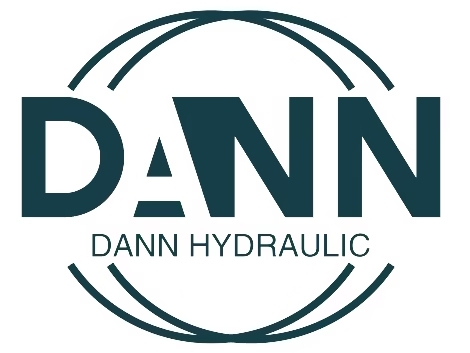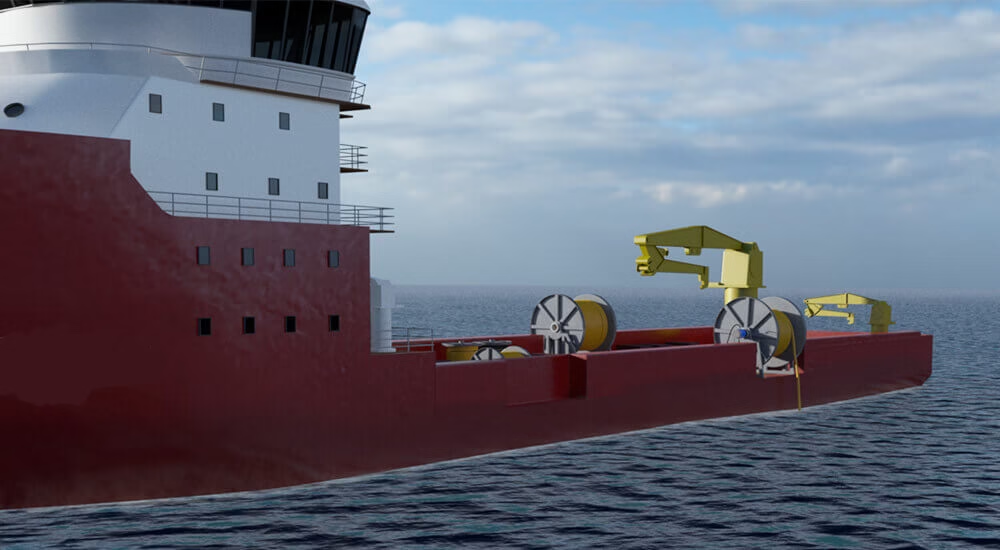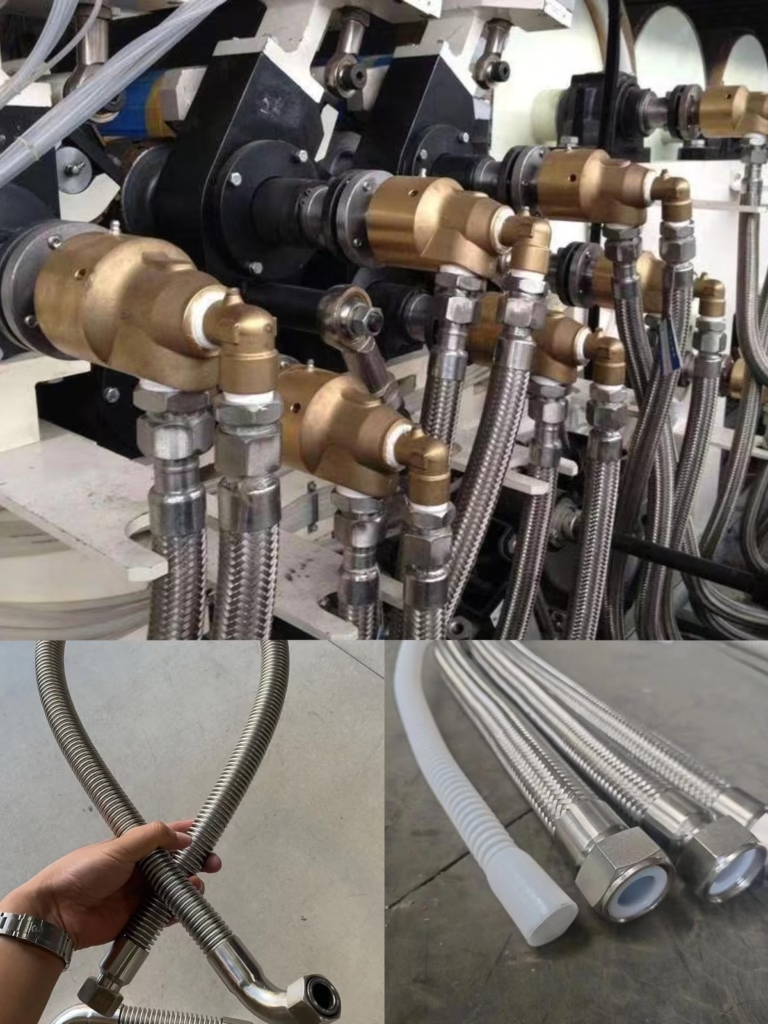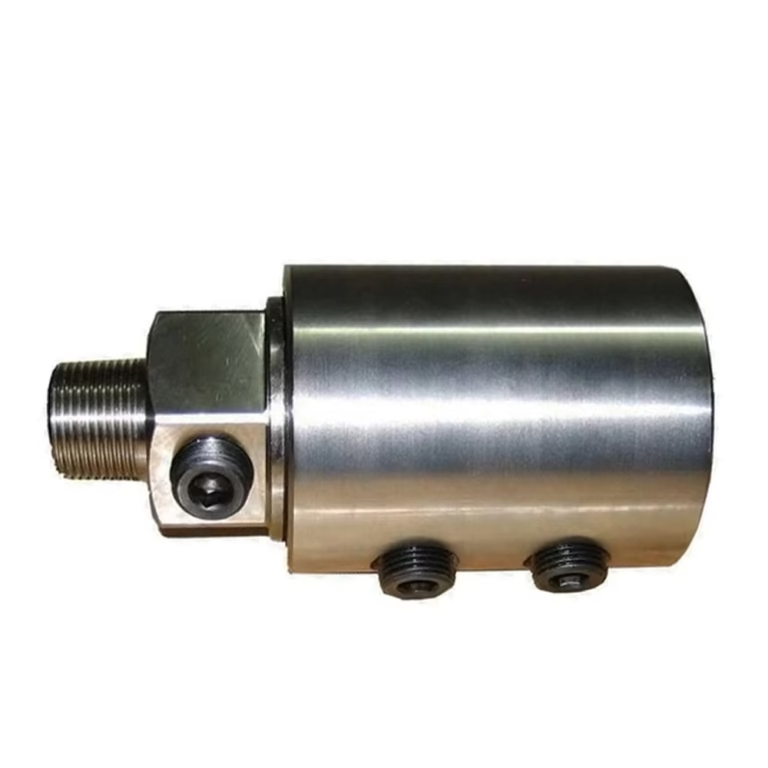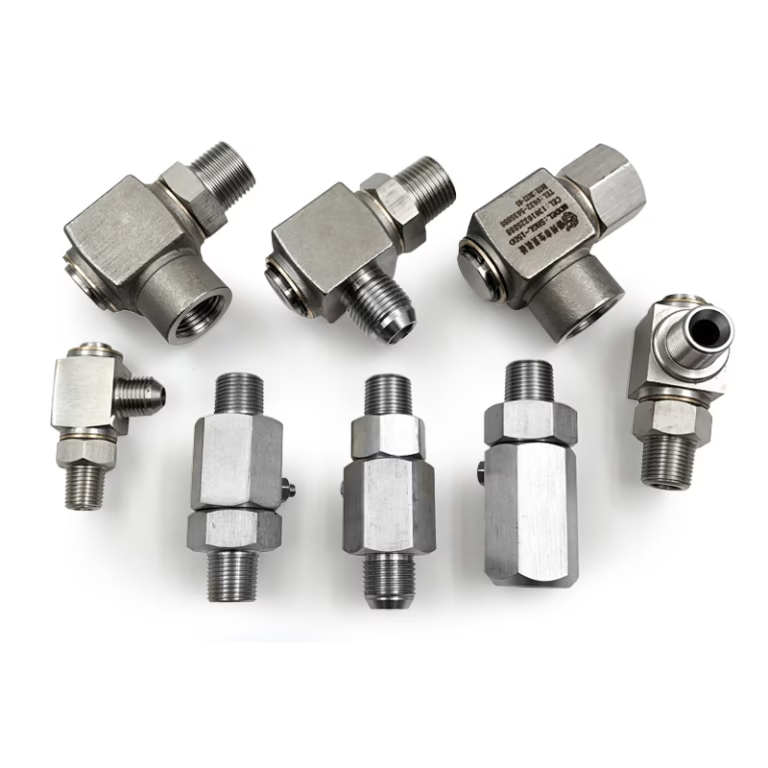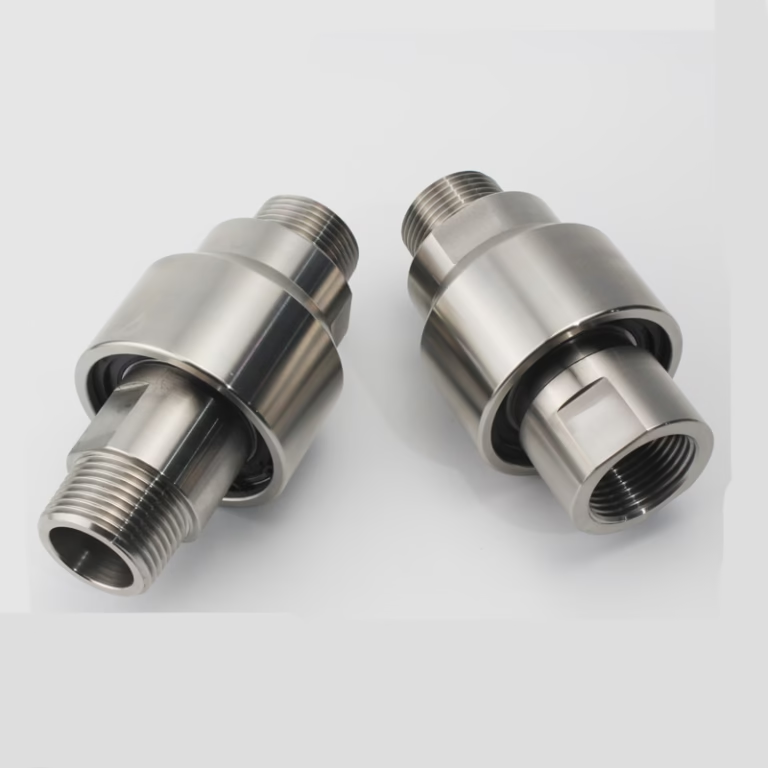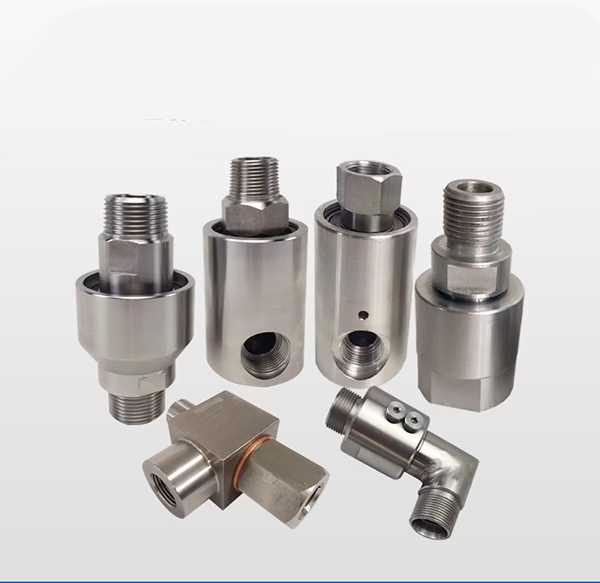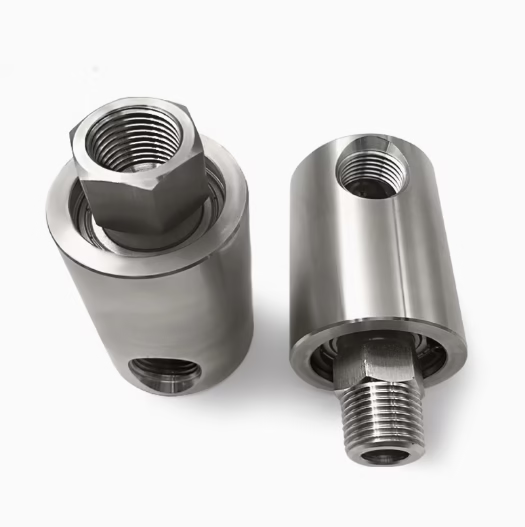The Secret of Ship Joints: The Critical Role of Rotary Joints in Large Ships
Across the vast ocean, large ships are like a mobile steel city, their complex and vast systems working together to ensure safe and efficient navigation. Among the countless “joints” of this “city,” a precision component called Ship Joints (Swivel Joints) plays an indispensable role as its nerves and blood vessels. It is a critical device capable of 360° rotation while continuously transmitting power, signals, and various fluids. This article will provide a broader perspective and delve into the diverse applications of rotary joints in large ships, from deck to deep sea, from power to control, their core operating principles, their strategic importance, and the cutting-edge technological challenges they face.
I. The Diverse Applications of Ship Joints: The “Lifeline” of Ships
Rotary joints are not limited to a few isolated systems. They integrate deeply into the critical dynamic links of modern large ships.
1. Navigation and Control Systems:
Steering Gear and Propulsion Systems: In addition to the hydraulic lines connecting the steering gear, rotary joints play a core role in more advanced podded propulsion systems. These propellers can rotate 360 degrees, providing exceptional maneuverability. Rotary joints (often integrated with slip rings in this scenario) simultaneously transmit high-pressure hydraulic oil to control propeller angle, cooling water to cool the motor, high-voltage electricity, and control signals, making them the “heart” of the entire propulsion system.
Controllable Pitch Propeller: Hydraulic oil is delivered to the rotating propeller shaft via a hydraulic rotary joint, allowing for real-time adjustment of the blade angle. This allows precise control of the ship’s speed and direction while maintaining constant main engine speed, resulting in efficient fuel economy.
2. Deck Machinery and Cargo Handling Systems:
Cranes and Hoists: Heavy-duty cranes are core equipment on large cargo and construction vessels. Located at the center of a crane’s rotating base, the swivel joint not only transmits high-pressure hydraulic power for the boom’s pitch, extension, and grab opening and closing, but also often incorporates electrical slip rings to transmit control signals from the operator’s console, video surveillance signals, and power the lighting and sensors at the boom’s top.
Anchoring and mooring winches: Automated anchoring and mooring systems require swivel joints to transmit hydraulic or pneumatic power during rotation to drive the winch and brake, ensuring the vessel’s safe anchoring in ports or on offshore platforms.
3. Communications and Navigation Systems:
Radar and Satellite Communication Antennas: Modern large ships rely on satellites for global communications (Satcom), positioning (GPS), and weather monitoring. The combination of swivel joints with **RF rotary joints and fiber optic rotary joints (FORJs)** ensures lossless and uninterrupted transmission of power, control signals, and gigabit-level data while the antenna continuously tracks satellites and scans without blind spots.
4. Special Operations and Exploration Equipment:
Robotic Vehicle (ROV) Launch and Retrieval System (LARS): The large winches and booms used to deploy and retract underwater robots (AUVs) on oceanographic research vessels and offshore engineering vessels require a swivel joint that integrates electrical, hydraulic, pneumatic, and fiber optic pathways within a single device. It provides high-voltage electrical and hydraulic power to the deep-sea ROV and transmits high-definition video and sensor data, serving as the “umbilical cord” connecting the mother ship and the AUV.
Drilling Platforms and Floating Production, Storage, and Offloading (FPSO) Vessels: Aboard these offshore engineering behemoths, the swivel joint (often referred to as the “fluid turret”) is a core piece of equipment. It connects multiple high-pressure oil and gas pipelines and mooring lines from subsea wells, allowing the vessel to rotate 360° around a fixed turret in response to wind and waves, while ensuring the continuous production and transmission of multiphase fluids such as oil, gas, and water. This requires extremely high technical complexity and reliability.
II. Core Operating Principle: Dynamic Sealing and Multi-Path Integration
The core of Ship Joints lies in “dynamic and static separation” and “reliable sealing.”
It consists of two main components: the stator, which is connected to the ship’s hull or fixed structure, and the rotor, which moves with the rotating equipment. The following key technologies facilitate the functioning of the two components:
Precision Sealing Technology: This is the heart of the rotary joint. Depending on the pressure, medium, and speed, seals range from simple O-rings and lip seals to polytetrafluoroethylene (PTFE)-filled seals for high-pressure environments, and finally, the most reliable and durable balanced mechanical seals. These seals operate with micron-level precision, ensuring a leak-proof interface between the dynamic and static components under high pressure and continuous rotation.
Bearing Support System: An array of internal deep groove ball bearings, angular contact bearings, or roller bearings supports the rotor with extremely low friction and withstands radial and axial loads from the pipeline and external forces, ensuring smooth rotation and reducing drive torque.
Multi-Path Isolation Design: When multiple different media need to be transported, the internal structure is designed into multiple independent annular chambers. Each chamber is strictly isolated by a set of seals to prevent cross-contamination between hydraulic oil, cooling water, and compressed air.
III. Strategic Importance: Beyond Component Value
Improving Ship Maneuverability and Operational Capabilities: Rotary joints enable omnidirectional movement of ship equipment, greatly improving control accuracy, operational range, and efficiency, and are the foundation for automated and intelligent operations.
Ensuring System Safety in Extreme Environments: Reliable sealing technology is a key line of defense against hydraulic oil and fuel leaks and is directly related to fire and explosion safety. In harsh sea conditions, a reliable rotary joint can prevent catastrophic accidents caused by pipeline twisting and breaking, safeguarding personnel, ships, and the marine environment.
Optimizing Lifecycle Costs: High-quality rotary joints require a higher initial investment but deliver long life and low maintenance. They reduce economic losses caused by downtime from failures. Their modular design enables easy maintenance. This design cuts repair time and labor costs. Overall, these features improve the ship’s operational efficiency.
IV. Cutting-Edge Technology Challenges and Future Trends
The requirements for rotary joints on large ships are becoming increasingly stringent, driving continuous technological innovation:
Challenges
Extremely Corrosive Environments: The high salt spray and high humidity in the ocean pose a severe challenge to materials.
Ultra-High Pressure and High Flow: Deep-sea operations demand robust rotary joints. Large hydraulic systems also require durable rotary joints. These joints must withstand pressures of hundreds of megapascals. They must handle enormous fluid throughput reliably.
Signal Integrity: Engineers integrate electrical and fiber optic slip rings into the system. They must maintain zero data signal attenuation during high-frequency rotation. They also prevent bit errors to ensure reliable performance. Achieving these goals presents a significant technical challenge.
Complex Function Integration: Engineers integrate hydraulic, electrical, pneumatic, optical, and high-frequency signal pathways in a confined space. They must address electromagnetic interference (EMC) effectively. They also manage heat dissipation to ensure system reliability. These tasks create significant technical challenges.
Explosion-Proof and Certification: Rotary joints operate safely in flammable and explosive environments. Applications include natural gas, crude oil, and similar hazardous media. Manufacturers obtain ATEX certification for explosion-proof compliance. They also secure IECEx certification to meet global safety standards.
Solutions and Future Trends
New Material Applications: Engineers widely use duplex and super duplex stainless steels in rotary joints. They also apply nickel-based alloys such as Inconel for extreme durability. Designers select ceramics and engineering plastics to enhance performance. They apply ceramic and tungsten carbide coatings for surface protection. These materials and coatings effectively combat corrosion and wear.
Intelligence and Condition Monitoring: Future rotary joints will integrate advanced sensors for smarter operation. These sensors monitor temperature, pressure, vibration, and potential leakage. The system enables real-time self-diagnosis during continuous operation. Predictive maintenance becomes possible, reducing downtime and repair costs. IoT technology transmits real-time operating data to the ship’s control center. The system provides early warnings before failures occur.
Full Electricity and Fiber Optic Transmission: Shipbuilders move rapidly toward full electrification in modern fleets. This trend increases demand for high-power electric slip rings. It also drives strong demand for high-speed fiber optic slip rings. Contactless fiber optic transmission technology will fundamentally address wear and signal interference issues.
Modularity and Standardization: Engineers design more standardized modular rotary joint units. These modular units allow quick repairs and replacements. They function like building blocks for easy integration. This design further shortens overall maintenance windows.
Conclusion
The Ship Joints, a seemingly insignificant component, is in fact a “hidden champion” that supports the smooth operation of the complex functional systems of modern large ships. Like a sophisticated bridge, it stably transmits energy and information between rotation and stillness. As global shipping and marine engineering advance towards deeper, longer, and more intelligent operations, the performance requirements for swivel joints will inevitably reach new heights. Continuous technological innovation will be the key to ensuring the continued flexibility, strength, and reliability of this “ship joints.”
